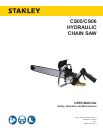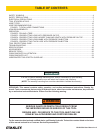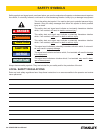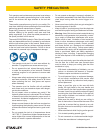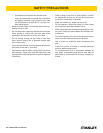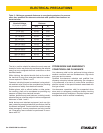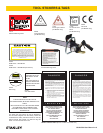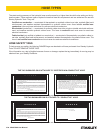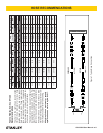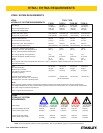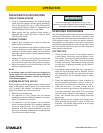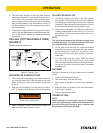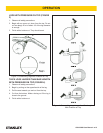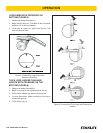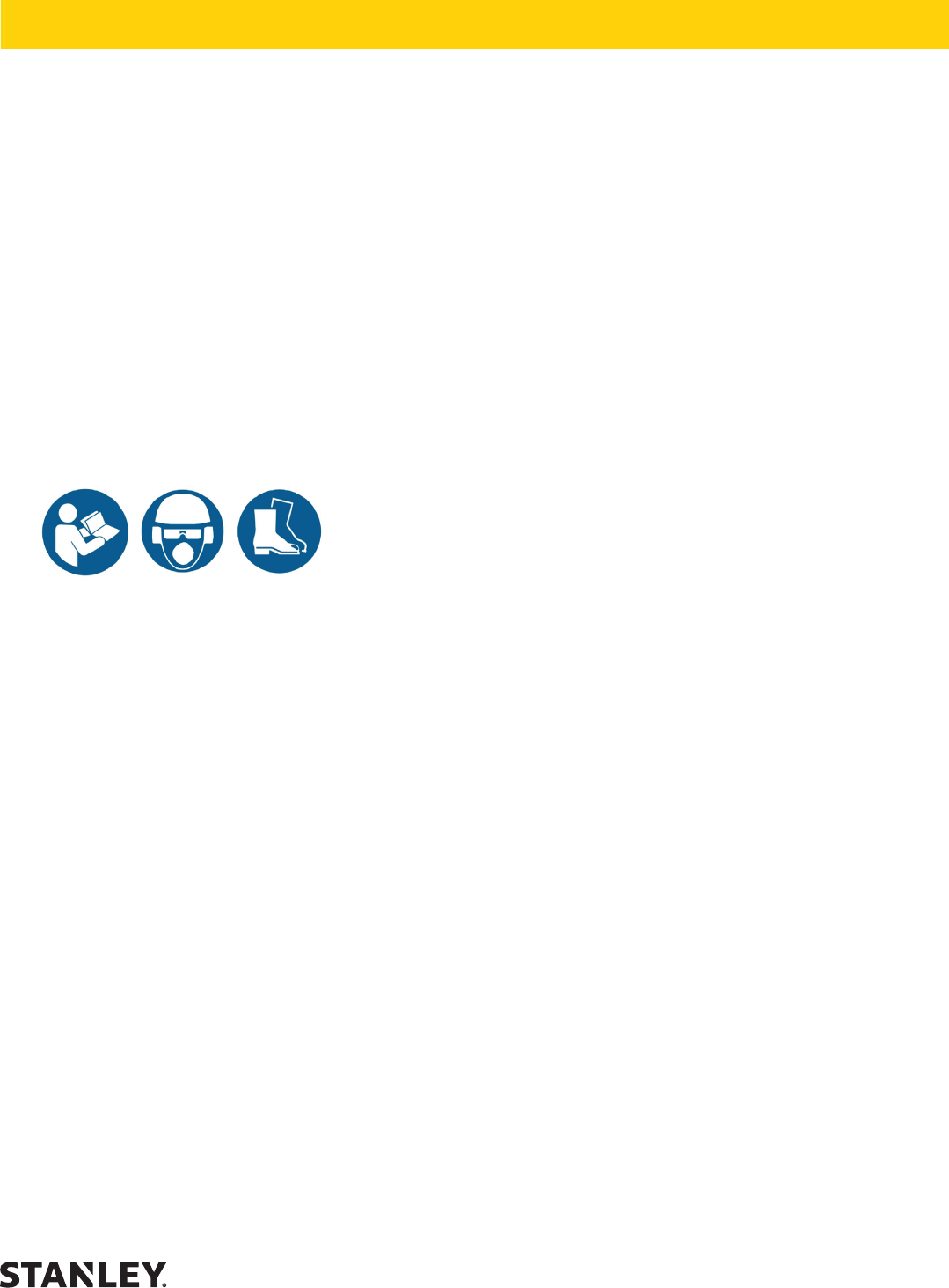
CS05/CS06 User Manual ◄ 5
Tool operators and maintenance personnel must always
comply with the safety precautions given in this manual
and on the stickers and tags attached to the tool and
hose.
These safety precautions are given for your safety. Re-
view them carefully before operating the tool and before
performing general maintenance or repairs.
Supervising personnel should develop additional pre-
cautions relating to the specic work area and local
safety regulations. If so, place the added precautions in
the space provided in this manual.
The model CS05/CS06 Hydraulic Chain Saw will provide
safe and dependable service if operated in accordance
with the instructions given in this manual. Read and un-
derstand this manual and any stickers and tags attached
to the tool and hose before operation. Failure to do so
could result in personal injury or equipment damage.
• The operator must start in a work area without by-
standers. Flying debris can cause serious injury.
• Do not operate the tool unless thoroughly trained
or under the supervision of an instructor. Establish
a training program for all operators to ensure safe
operation.
• Always wear safety equipment such as goggles, ear
and head protection, and safety shoes at all times
when operating the tool. Use gloves and aprons
when necessary.
• The operator must be familiar with all prohibited
work areas such as excessive slopes and danger-
ous terrain conditions.
• Do not inspect, clean or replace any part(s) if the
hydraulic power source is connected. Do not inspect
or clean the tool while the hydraulic power source is
connected. Accidental engagement of the tool can
cause serious injury.
• Always connect hoses to the tool hose couplers be-
fore energizing the hydraulic power source. Be sure
all hose connections are tight and are in good condi-
tion.
• Do not operate the tool at oil temperatures above
140 °F/60 °C. Operation at higher temperatures can
cause higher than normal temperatures at the tool
which can result in operator discomfort.
• Do not operate a damaged, improperly adjusted, or
incompletely assembled chain saw. Be sure that the
chain stops moving when the control trigger is re-
leased.
• Never wear loose clothing that can get entangled in
the working parts of the tool.
• Keep all parts of your body away from the chain saw
and maintain proper footing and balance at all times.
• Warning: Use of this tool on certain materials during
demolition could generate dust potentially contain-
ing a variety of hazardous substances such as as-
bestos, silica or lead. Inhalation of dust containing
these or other hazardous substances could result
in serious injury, cancer or death. Protect yourself
and those around you. Research and understand
the materials you are cutting. Follow correct safety
procedures and comply with all applicable national,
state or provisional health and safety regulations
relating to them, including, if appropriate arranging
for the safe disposal of the materials by a qualied
person.
• Do not rely exclusively upon the safety devices built
into the saw. As a chain saw user, several steps
must be taken to keep your cutting jobs free from
accidents or injury.
– With basic understanding of kickback, you can
reduce or eliminate the element of surprise.
Sudden surprise contributes to accidents.
– To avoid personal injury or equipment damage,
all tool repair, maintenance and service must
only be performed by authorized and properly
trained personnel.
– Keep a good rm grip on the saw with both
hands, the right hand on the rear handle and
the left hand on the front handle when operating
the saw. Use a rm grip with thumbs and ngers
encircling the chain saw handles. A rm grip will
help reduce kickback and maintain control of
the saw. Do not let go.
– Make sure the area in which you are cutting is
free of obstructions. Never allow the nose of the
guide bar to contact the log, branch or any ob-
struction that can be accidently hit while operat-
ing the saw.
– Never start the tool while it is lying on the ground.
– Cut at rated operating speeds (gpm).
– Do not overreach or cut above shoulder height.
– Follow the manufacturer’s sharpening and
SAFETY PRECAUTIONS



